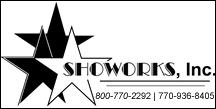
NAB (National Association of Broadcasters) A professional trade organization for people working in the radio and television industry. NAMM (National Association of Music Merchants) A professional trade organization for people working in the music (MI) business -- primarily in retailing and manufacturing of music products. nano- A prefix for one billionth (10E-9), abbreviated n. NARAS (National Academy of Recording Arts & Science) See The Recording Academy. narrow-band filter Term popularized by equalizer pioneer C.P. Boner to describe his patented (tapped toroidal inductor) passive notch filters. Boner's filters were very high Q (around 200) and extremely narrow (5 Hz at the -3 dB points). Boner used 100-150 of these sections in series to reduce feedback modes. Today's usage extends this terminology to include all filters narrower than 1/3-octave. This includes parametrics, notch filter sets, and certain cut-only variable equalizer designs. See notch filter. Network Generally used to mean a multi-computer system configured to share information and resources. Characterized by full two-way (duplex) communications between all devices on the network. Nodes on the network may include computers, printers, scanners and other devices. The types of devices found on the network is rapidly expanding including audio and video control and conferencing systems. nibble A group of four bits or half a byte (8-bits). Noise meaningless sound produced as a by-product of unintentional or unrelated activities. In electrical circuits, the random noise "hiss" produced by all components in the circuit. Unless dealt with properly this background noise can build up or become amplified to the point that it interferes with the desired signal or makes the circuit unusable. See Signal to Noise Ratio. noise floor Normally the lowest threshold of useful signal level (although sometimes audible signals below the noise floor may be recovered). noise gate An expander with a fixed "infinite" downward expansion ratio. Used extensively for controlling unwanted noise, such as preventing "open" microphones and "hot" instrument pick-ups from introducing extraneous sounds into the system. When the incoming audio signal drops below the user set-point (the threshold point) the expander prevents any further output by reducing the gain to "zero." The actual gain reduction is typically on the order of -80 dB, thus once audio falls below the threshold, effectively the output level becomes the residual noise of the gate. Common terminology refers to the gate "opening" and "closing." Another popular application uses noise gates to enhance musical instrument sounds, especially percussion instruments. Judicious setting of a noise gate's attack (turn-on) and release (turn-off) times adds "punch," or "tightens" the percussive sound, making it more pronounced. noise shaping A technique used in oversampling low-bit converters and other quantizers to shift (shape) the frequency range of quantizing error (noise and distortion). The output of a quantizer is fed back through a filter, and summed with its input signal. Dither is sometimes used in the process. Oversampling A/D converters shift much of it out of the audio range completely. In this case, the in-band noise is decreased, which allows low-bit converters (such as delta-sigma) to equal or out-perform high-bit converters (those greater than 16 bits). When oversampling is not involved, the noise still appears to decrease by 12 dB or more because it is redistributed into less audible frequency areas. notch filter A special type of cut-only equalizer used to attenuate (only, no boosting provisions exist) a narrow band of frequencies. Three controls: frequency, bandwidth and depth, determine the notch. Simplified units provide only one or two controls, with bandwidth and/or depth fixed internally. Used most often in acoustic feedback control to eliminate a small band of frequencies where the system wants to howl (feedback). See narrow-band filter. nonvolatile Refers to a memory device which does not lose its data when power is removed from the system. NSSP (National Standards Systems Network) A Web-based service launched by ANSI, along with government and industry partners. A full search & sales service provides for locating and buying virtually any standard. Planners say more than 100,000 global standards will be available on the data base by the end of 1997. Over 25 standards groups are providing technical specs for the new database, including ISO. The EIA endorsed the project. NTSC (National Television systems Committee) The analog video standard used for television broadcast and composite video connections in the United States. The NTSC format standard is administered by the Federal Communications Committee (FCC). NTSC signals encode video as 525 horizontal lines of pixels. The lines are scanned in odd and even sets at 1 field (1/2 frame) every 60th of a second (to work with the US power standard of 60cps), resulting in am effective video frame rate of 30fps. NTSC is one of three main television standards throughout the world. See PAL and SECAM null modem cable Special wiring of an RS-232 cable such that a computer can talk to another computer without a modem (thus "null" modem). As a minimum a null modem cable reverses pins 2 and 3 on a standard RS-232 cable. Nyquist frequency The highest frequency that may be accurately sampled. The Nyquist frequency is one-half the sampling frequency. For example, the theoretical Nyquist frequency of a CD system is 22.05 kHz (44.1kHz/2).
|
